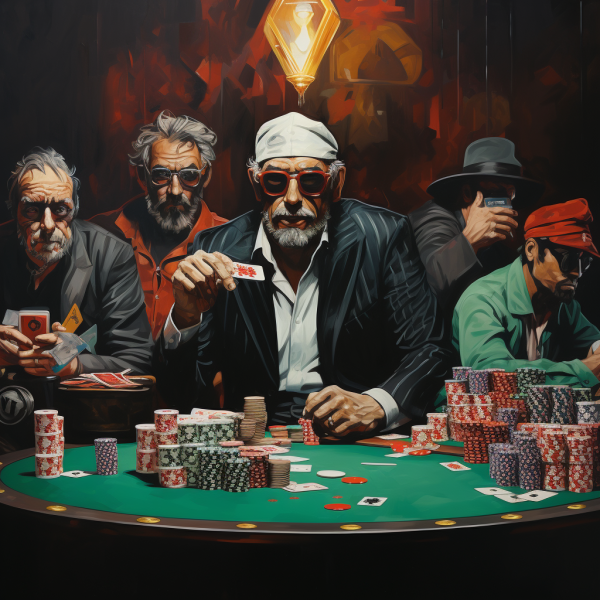
Classic Poker Tells: Reading Your Opponents Like a Book
Classic Poker Tells. There are three components to poker: skill, strategy, and psychology. Reading your opponents is as important as knowing the cards in your hand. In poker, a “tell” is a behavior, habit, or reaction that can expose information about a player’s hand — essentially, a giveaway. While experienced players may have their unique and subtle tells, there are classic signs that often indicate what kind of hand a player has. Here’s a look at some of the most classic poker tells and how you can use this knowledge to your advantage.
The Stare Down: Classic Poker Tells
When, a player, stares at you, they might be trying to intimidate you into thinking they have a strong hand. More often than not, this is a bluff. Most players with strong hands prefer to act nonchalantly so they don’t relinquish their strength.
Acting Quickly or Slowly
Players who act quickly might be trying to portray confidence, suggesting they have a strong hand when they might not. Conversely, players who take their time and then make a big bet often try to portray weakness when holding a firm hand.
Nervousness or Shaking Hands
Surprisingly, when players seem nervous or shake hands, they often have a strong hand. It is a natural reaction to have adrenaline when you have potentially winning cards.
Overconfidence and Loud Comments
Sometimes players become suddenly outspoken or overly confident when they are bluffing. They might comment significantly about their hand or the play to throw you off the scent.
Glancing at Hole Cards after the Flop: Classic Poker Tells
If a player rechecks their hole cards after the flop, they might check to see if they have a flush or straight draw. It often indicates that they still need to get a made hand.
Avoiding Eye Contact
Players who avoid eye contact often feel that they are lying, which is usually a sign of a weak hand or a bluff.
Frequent Posture Changes: Classic Poker Tells
For example, a player who frequently changes their posture — sitting up straight suddenly after leaning back for a while — might unconsciously react to a good hand.
Excessive Checking of the Pot
A player who constantly checks the pot might be calculating the pot odds, usually a sign that they have a drawing hand and are waiting for the correct odds to call.
Covering Mouth or Face: Classic Poker Tells
People often cover their mouths or face when lying, which also translates to poker. It could be a sign of bluffing.
Fiddling with Chips or Cards
Some players fiddle with their chips or cards when they have a strong hand, as the excitement makes them more fidgety than usual.
Breathing Patterns: Classic Poker Tells
Pay attention to a player’s breathing. An increased or heavy breathing pattern might suggest excitement or nervousness about their strong hand.
Conclusion: Classic Poker Tells
It is important to note that these tales are not foolproof. Experienced players might fake these tells to throw you off, while some individuals might naturally exhibit some of these behaviors without it being tied to the strength of their hand.
The key to effectively using poker tells is to observe your opponents’ behavior from the start of the game. Establish a baseline for their actions and look for deviations. Remember that the most reliable poker strategy combines understanding the odds with an interpretation of players’ behaviors.
As you gain more experience at the poker table, you will become better at reading these tales and knowing when to trust your observations. As importantly, be mindful of your behavior and what you might unconsciously reveal to your opponents.
So the next time you sit at a poker table, remember these classic tales. They might be your secret weapon to call an opponent’s bluff or know when to fold. Happy playing!
If you liked this post you may enjoy Mastering the Psychology of Poker: Unlocking Your Winning Potential
